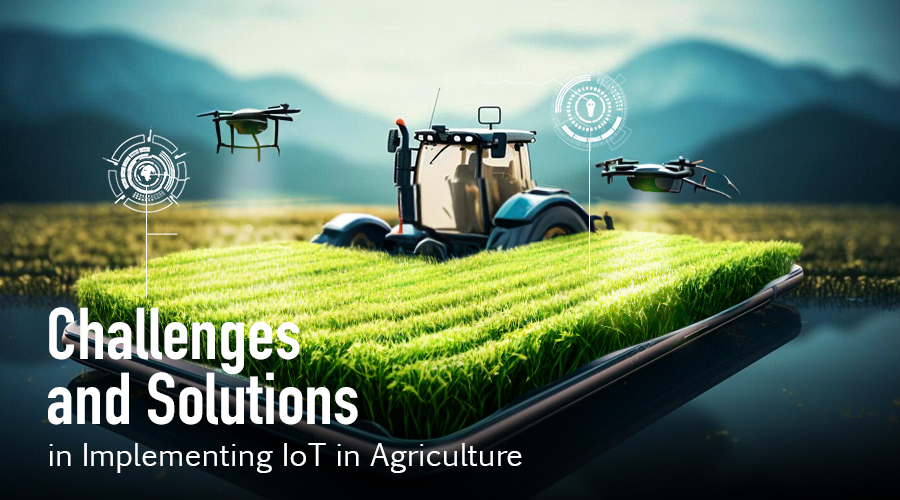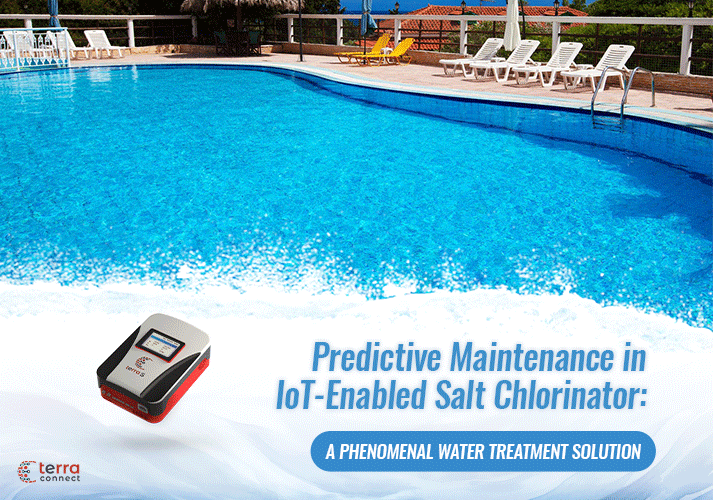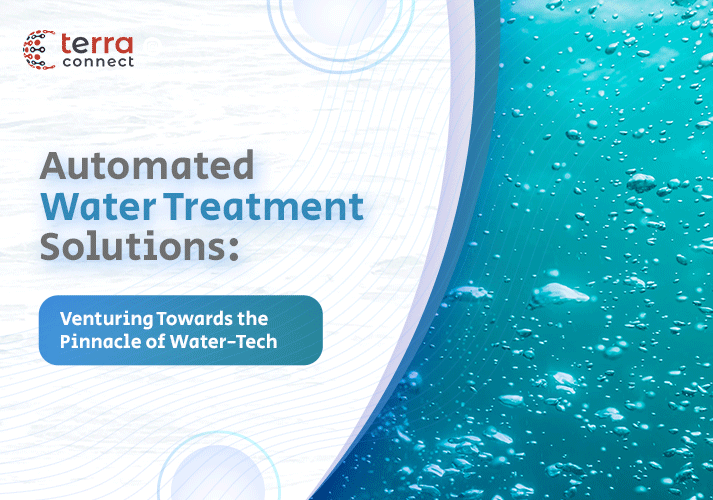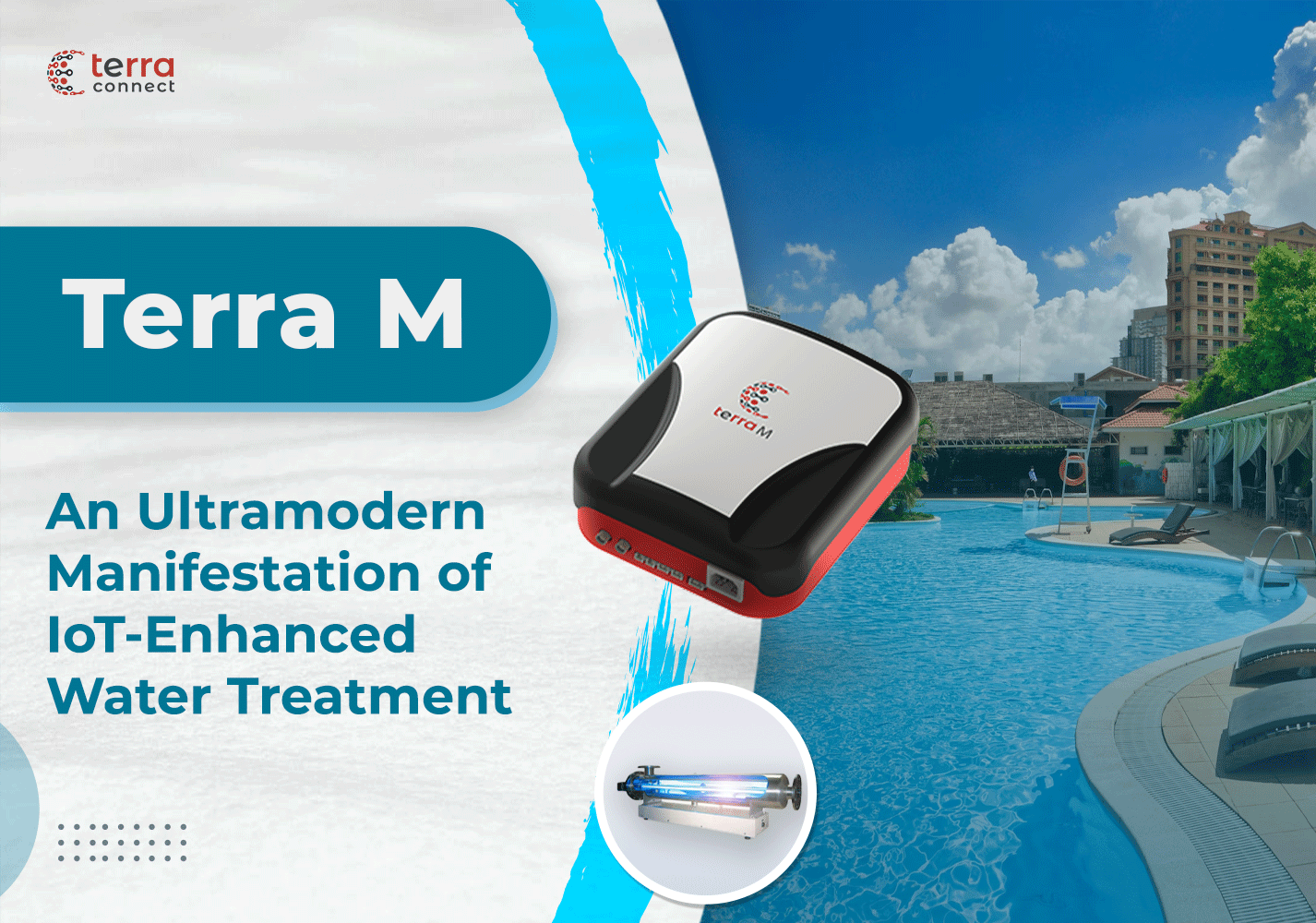
Challenges and Solutions in Implementing IoT in Agriculture
The integration of Internet of Things (IoT) with agriculture technologies holds the promise of a transformative revolution. Farmers are being offered unparalleled tools to elevate productivity, refine resource management, and completely redefine decision-making processes.
However, this voyage towards cultivating a digitally empowered agricultural sector is not without its share of hurdles. From contending with rural connectivity barriers to intricacies surrounding data security and interoperability issues, the journey to seamlessly integrate IoT in agriculture is marked by challenges that demand innovative solutions.
Rural Connectivity Barriers in Agricultural IoT Integration
1. Lack of Reliable Internet Infrastructure:
The smooth integration of IoT in agriculture is impeded in rural areas by the lack of a strong internet infrastructure. The entire potential of IoT devices, such sensors and monitoring systems, is still unavailable to farmers without a dependable and steady internet connection. The effective deployment of IoT is reliant on real-time data transmission, which can be disrupted. This can limit the potential for fast decision-making and resource management.
Investments in extending internet service to remote agricultural areas should be made in partnership by public and private entities. Making use of satellite internet technology may be a feasible answer, offering a network that is more widely available and accessible. Agricultural IoT devices can benefit from the development of low-power, long-range communication technologies, which can guarantee that efficiency gains at the expense of connectivity.
2. Difficulty in Establishing and Maintaining Connectivity in Remote Farming Locations:
Establishing and maintaining connectivity poses a distinct set of issues due to the wide and varied landscape of rural farming settings. Farms in isolated locations with views of hills, valleys, or vast fields frequently experience erratic or poor internet service. Furthermore, the physical integrity of IoT devices may be in danger due to the severe environmental conditions that are common in these regions.
Mesh network technologies are an effective means to solve connectivity issues in remote farming sites. These networks provide communication between IoT devices, enabling the formation of a robust and self-healing network even in difficult environments. Moreover, the development of weather-resistant and ruggedized Internet of Things devices guarantees their robustness, allowing them to endure the severe circumstances common in isolated farming environments.
The Cost Challenge in Agricultural IoT Integration
A key obstacle that stands in the way of agriculture’s adoption of IoT technologies is the high expense of integrating and maintaining smart farming IoT solutions in farming operations. This problem includes the high upfront cost of IoT equipment, continuing operating costs, and the financial burden on farmers, especially those in low-income environments.
The main cause of the cost challenges is the large initial investment required to purchase and install IoT devices on farms. These devices, which range in price from sophisticated machinery to sensors, are frequently expensive. The initial expenditures associated with adopting IoT can be a daunting hurdle for farmers who are already struggling with limited budgets and thin profit margins, which hinders wider adoption.
A gradual adoption strategy for IoT is necessary to address the cost barrier. Farmers’ financial burdens can be reduced by partnerships between governments, agricultural organizations, and technological companies that result in grants, subsidies, or other financial benefits. Farmers can begin small and build gradually as they see benefits and their financial capacity increases by implementing scalable and flexible IoT devices. In addition to fostering innovation, a competitive market for IoT solutions can progressively lower prices and increase accessibility to these technologies.
Data Security in Agricultural IoT
The integration of IoT technology is transforming the agricultural scene, bringing with it a significant challenge: protecting sensitive agricultural data. This problem presents several fronts, with the delicate nature of agricultural data and the imminent danger of data breaches creating serious obstacles to the smooth application of smart farming solutions using IoT in agriculture.
The risk of data breaches increases with the increased connectivity that IoT devices bring with them. Important data breaches could put farming enterprises’ integrity in jeopardy in addition to financial risks. The interconnectivity of IoT devices increases the effect of data breaches in a variety of applications, including supply chain management and precision agriculture, therefore protective measures for the agricultural data ecosystem are imperative.
Implementing Strong Cybersecurity Measures:
In the age of the Internet of Things, a strong cybersecurity framework is essential to protecting agricultural data. These entails implementing safe access controls, encryption protocols, and ongoing IoT network monitoring. Farmers may greatly reduce the danger of illegal access and data breaches by strengthening their digital perimeter and protecting the privacy and accuracy of their agricultural data.
Educating Farmers Best Practices for Data Security:
A vital first step in bolstering the security of agricultural data is educating farmers. Farmers who participate in education programs on best practices for data security can become more capable of seeing and fixing such problems. Farmers may actively participate in the protection of their data and build a more secure and resilient agricultural ecosystem by promoting a culture of cybersecurity awareness.
Interoperability Challenges in Agricultural IoT
Absence of standard protocols :
A major obstacle to the adoption of agricultural IoT solutions is the absence of standard protocols. Within the Internet of Things, protocols function as rules that regulate how devices communicate with each other, guaranteeing efficient data transmission and analysis. Unfortunately, there are currently no widely used and defined communication protocols for IoT devices in the agricultural sector. The disparity arises due to different manufacturers making IoT devices using distinct communication protocols, which makes it difficult to integrate them seamlessly.
The establishment of common protocols, which allow devices from different manufacturers to connect effortlessly, is the core solution to interoperability difficulties. This standardization facilitates the development of a cohesive and effective IoT ecosystem by promoting interoperability and making the integration process for farmers easier.
Incompatibility Between Various IoT Devices: Since a variety of IoT devices, each with a distinct function, frequently run on proprietary systems, there can be incompatibilities. This fragmentation makes it difficult for different devices to work together collaboratively and keeps them from easily exchanging ideas and data. One important way to overcome interoperability issues is to encourage the adoption of open-source platforms. Open-source solutions give different IoT devices a neutral platform on which to work together, regardless of whether they are proprietary or not. These platforms can be used by farmers to combine many devices into a unified system, encouraging data exchange and maximizing the use of their IoT investments.
The enormous potential for change becomes clear as we work together to overcome obstacles like poor rural connectivity, cost constraints, and data security in our agricultural IoT environment. To fully realize this potential, cooperative efforts and strategic solutions are essential. Whether we support open-source platforms, strengthen cybersecurity safeguards, or push for standardized protocols, we are bringing the agriculture industry closer to the verge of a digital revolution. Adoption of these cutting-edge solutions promises a future of sustainability, connectedness, and efficiency that will benefit farmers and the agricultural community as a whole.
Terraconnect stands out as a premier IoT development company, consistently pioneering transformative solutions for various industries. Specializing in IoT product development, hardware design, firmware development, and expert consulting services, we are dedicated to delivering cutting-edge solutions. Our commitment revolves around fostering innovation and seamlessly integrating the latest technological advancements into our offerings. For all your IoT requirements, connect with us at Terraconnect and explore the possibilities of a connected future.
Categories
Year
Recent Articles

Predictive Maintenance in IoT-Enabled Salt Chlorinator: A Phenomenal Water Treatment Solution
Chaithanya

IoT-Enabled Pool Controller and Automated Backwash Solution: Envisioning the Pool Technology
Chaithanya

Automated Water Treatment Solutions: Venturing Towards the Pinnacle of Water-Tech
Chaithanya
